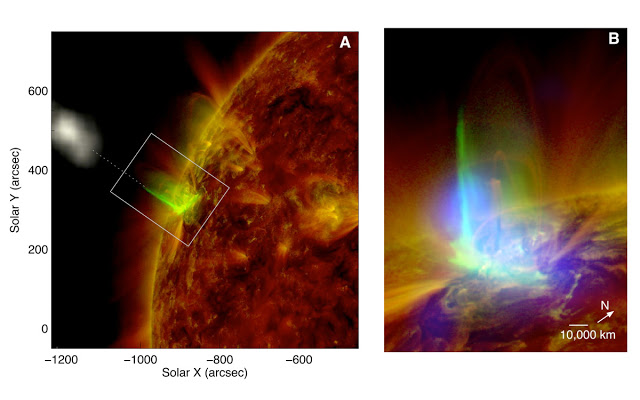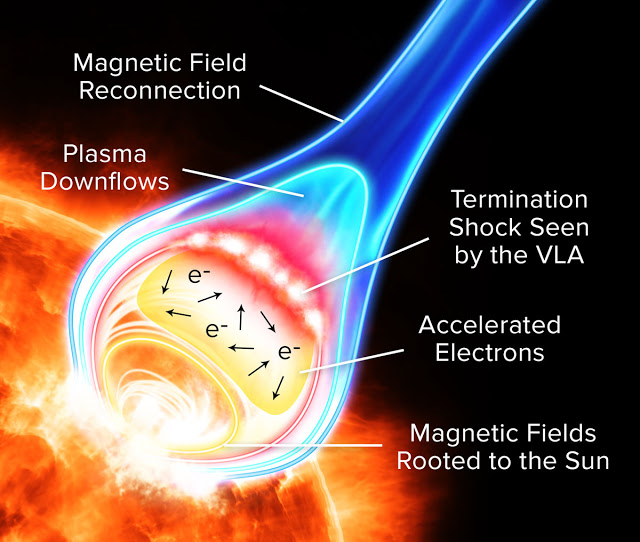| Online: | |
| Visits: | |
| Stories: |

| Story Views | |
| Now: | |
| Last Hour: | |
| Last 24 Hours: | |
| Total: | |
VLA Yields New Insights on Solar Flares
Solar flares, the most powerful explosions in the Solar System, can accelerate large numbers of charged particles to nearly the speed of light. How they do that, however, has been uncertain.
“It has been thought that a specific type of shock produced by solar flares could be responsible for accelerating these particles, but there has been no convincing observational evidence for this mechanism. Now, using the raw power of the upgraded VLA, we have a fundamentally new result that strongly supports this shock acceleration scenario,” said first author of the study, Bin Chen, of the Harvard-Smithsonian Center for Astrophysics.
The new VLA observations support the idea that the acceleration occurs in a region of the flare where fast plasma flows caused by the violent energy release impinge on dense magnetic loops and form a stationary shock, called a “termination shock.” Electrons are repeatedly pummeled by the shock into higher and higher speeds. The VLA results closely match computer simulations that produce such a phenomenon.
The solar flare of 3 March 2012. Left panel, overview of the flare seen at ultraviolet (red and green, showing material at one million and ten million degrees, respectively). The white patch at upper left is the associated solar eruption seen at X-ray. Right Panel, detail (boxed area in left panel) of the flare. Ultraviolet emission is in red and green; radio emission (produced by high-energy particles) seen with the VLA is in blue.

CREDIT: Chen, et al., NRAO/AUI/NSF, NASA.
“These new insights are a significant step forward in our understanding of particle acceleration, which is not only an important aspect of solar flares, but also a fundamental physical process occurring throughout the Universe,” Chen said.
The VLA was constructed during the 1970s and dedicated in 1980. From 2001 to 2012, the VLA was upgraded to incorporate advanced technology that had been developed since its dedication. Now returned to the technological state of the art, the VLA provides scientists with research capabilities vastly improved over its original design.
“The recently upgraded capabilities of the VLA were absolutely essential in establishing this finding,” said co-author Timothy Bastian, of the National Radio Astronomy Observatory.
Contacts and sources:
The National Radio Astronomy Observatory i
Source:




